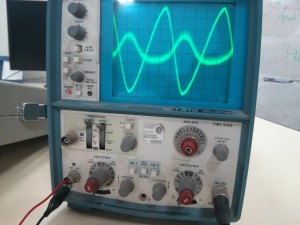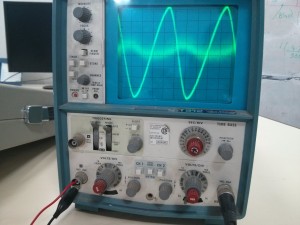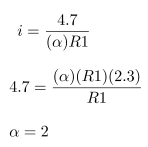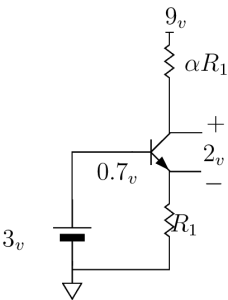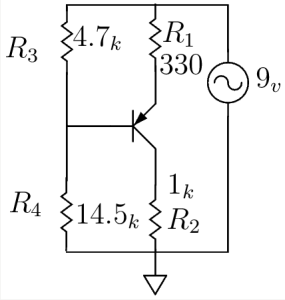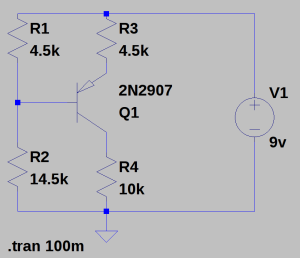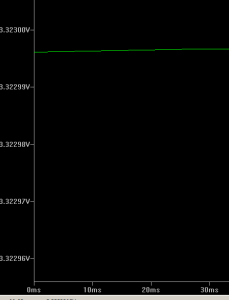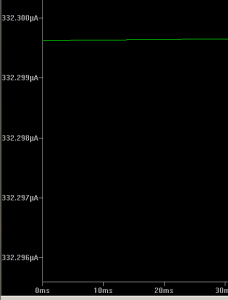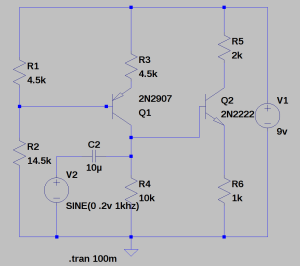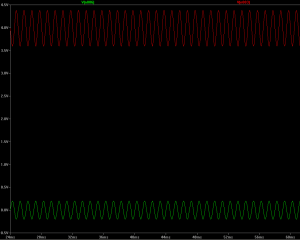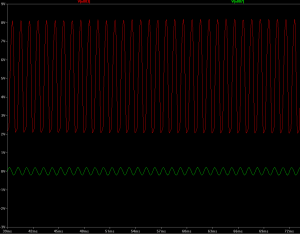The frequency and the sine wave was set by the function generator. The input, output wave forms were observed from the CRO. The conditions taken were a 50KΩ , 1KΩ and a current source. The input was fed to the 2.1 speaker’s connector jack to produce the sound of the fed sine wave.
|
Frequency (Hz) |
Input (peak to peak value) |
Conditions |
Output (Peak to peak value) |
Observations |
|
600 |
2 V |
50 KΩ |
0.2 V |
Distorted wave |
|
600 |
2 V |
1 KΩ |
2 mV |
Small signal with distorted wave |
|
600 |
2 V |
Current Source |
100 mV |
Distorted wave |
|
600 |
5.5 V |
Current Source |
300 mV |
Not distorted |
|
600 |
5.5 V |
50 KΩ |
100 mV |
Partially distorted |
|
600 |
5.5 V |
1 KΩ |
5 mV |
Bottom of the wave distorted |
|
450 |
11 V |
1KΩ |
8 mV |
Distorted wave |
|
450 |
11 V |
50 KΩ |
200 mV |
Extremely distorted wave |
From the tabulation the maximum output 300mV is achieved when the input is set to a peak to peak value of 5.5V connected from the current source (PNP BJT’s collector junction ).
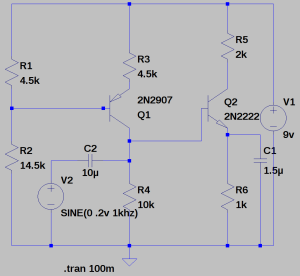 To determine the amplification,
To determine the amplification,
the voltage at the base of the NPN transistors is ≈ 2.5V. now divided by the resistance of resistor R6 gives us the current.
now, the obtained current value multiplied by R5
gives the amplified output ≈ 5V.


